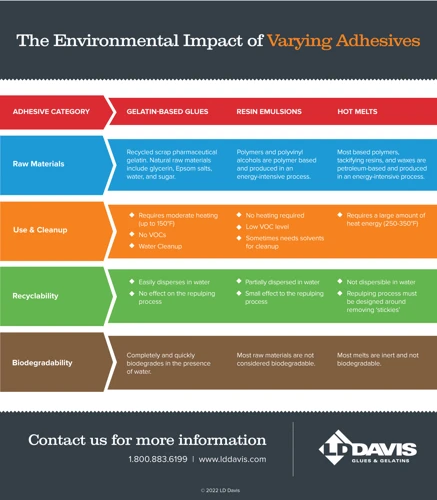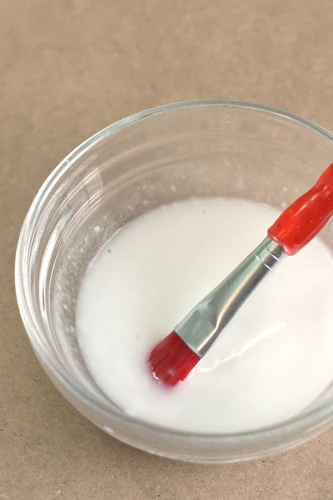The quest for sustainability has touched every aspect of our lives, including the adhesives we use. In a world increasingly conscious of the environmental impact of everyday products, eco-friendly adhesives have become a focal point for those seeking to reduce their ecological footprint. Swapping conventional glues for greener alternatives not only contributes to preserving our planet but also encourages a healthier lifestyle.
Understanding Biodegradable Adhesives
As we dive deeper into the realm of sustainable materials, the term ‘biodegradable adhesives’ often emerges. These substances are designed to break down naturally after their useful life, minimizing the long-term waste that pollutes our environment.
What Makes a Glue Biodegradable?
A biodegradable glue recipe often includes natural, organic materials that decompose over time. Unlike synthetic adhesives, these substances are meant to integrate back into the ecosystem, leaving minimal impact on the earth.
Is Elmer’s Glue Biodegradable?
When discussing classroom staples, the question frequently arises: is Elmer’s glue biodegradable? This popular adhesive is non-toxic and made from PVA (polyvinyl acetate), which is a synthetic material. While it is not harmful to the environment, its biodegradability is limited compared to natural alternatives.
Biodegradable Glue Recipe
Creating your own adhesive can be both rewarding and environmentally responsible. A homemade biodegradable glue recipe can be just as effective as its store-bought counterparts for everyday use.
Ingredients and Supplies Needed
- 1 cup of flour
- 1/3 cup of sugar
- 1 1/2 cups of water
- 1 tsp of vinegar
- Saucepan
- Whisk or spoon for stirring
- Container with lid for storage
Step-by-Step Guide to Create Your Own Glue
- Mix the flour and sugar in the saucepan.
- Gradually add water to the mixture while stirring to avoid lumps.
- Cook over medium heat, stirring constantly until the mixture thickens.
- Remove from heat and add vinegar to preserve the glue.
- Allow the mixture to cool before transferring it to a storage container.
- Seal the container and store in the refrigerator to extend shelf life.
Advanced Eco Friendly Super Glue Alternatives
For those in need of a stronger bond, there are advanced eco friendly super glue options available. These natural adhesives deliver robust performance without compromising environmental integrity.
Natural Ingredients for Stronger Bonding
Ingredients such as gum arabic, resin, or casein can be added to homemade recipes to enhance their bonding power. These substances are derived from plants or animals and are known for their strong adhesive properties.
Safety and Preservation of Homemade Glues
While creating an adhesive at home, it’s essential to consider safety and preservation. Natural preservatives like vinegar or citric acid can extend the life of your glue without introducing harmful chemicals. Always store your homemade adhesives in a cool, dry place and follow safety guidelines when handling any natural resins or gums.
Applications of Eco-Friendly Glues
Biodegradable glues are not just a sustainable choice but also incredibly versatile. They can be used in a variety of applications, ranging from simple household tasks to more complex craft projects.
Household Uses for Biodegradable Glue
For everyday tasks such as repairing a loose bookbinding or sealing an envelope, your homemade adhesive can be an excellent solution. Its natural composition is safe for use around the home and can be easily washed away with water.
Craft and School Projects
Educational settings can benefit greatly from using biodegradable glue recipes. These natural adhesives are safe for children to use and can handle paper, fabric, and wood – perfect for school projects and creative crafts.
In our continuous effort to support eco-friendly and sustainable practices, we’ve explored various glue-related topics. If you’re interested in learning how to create your own environmentally conscious adhesives, our guide on how to make eco-friendly glue is a great starting point. However, if you find yourself in other sticky situations, we’ve got you covered as well. Learn the tricks to tidying up after pest control with our tips on how to clean mouse trap glue. For the crafters and hobbyists, we delve into unique adhesive recipes like how to make fish glue, and for those with a sweet tooth, we even explore how to make edible glue for sweet trees. Join us on this adhesive journey to a greener future.
Conclusion: The Future of Sustainable Adhesives
The movement towards environmentally friendly products is shaping the future of adhesives. Biodegradable options represent a significant step forward in our collective journey towards a more sustainable world. By choosing or creating eco-friendly glues, we take part in a larger effort to protect our planet for future generations.

